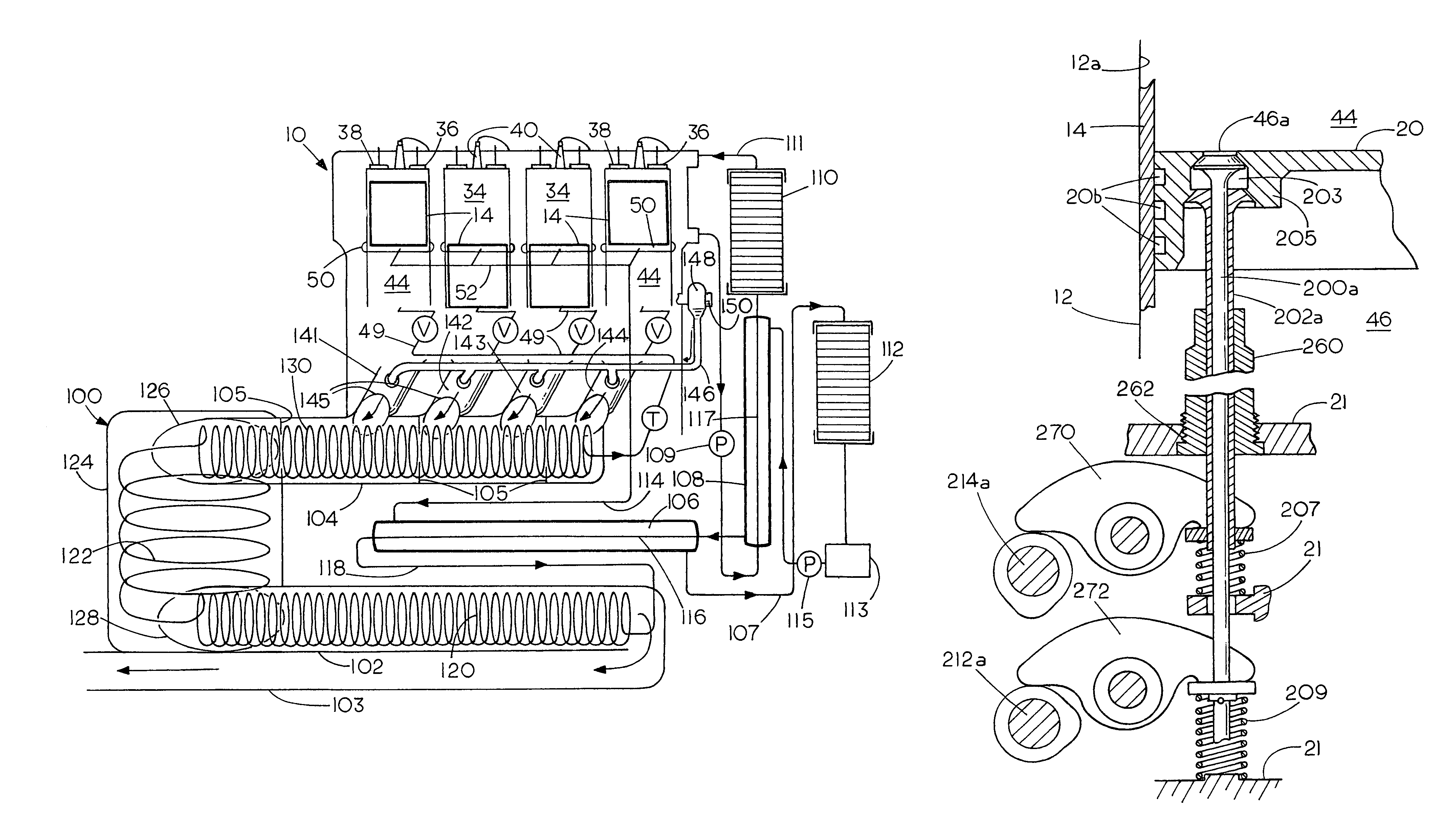High efficiency dual cycle internal combustion engine with steam power recovered from waste heat
a dual-cycle, high-efficiency technology, applied in steam use, machines/engines, mechanical equipment, etc., can solve the problems of inefficiency of the system for recovering waste exhaust heat and waste heat from the combustion chamber coolant in a dual-cycle engine, and achieve the effects of improving operating efficiency, high efficiency and increasing efficiency
- Summary
- Abstract
- Description
- Claims
- Application Information
AI Technical Summary
Benefits of technology
Problems solved by technology
Method used
Image
Examples
example
Calculation of Power Recovered
[0098]A one-cylinder 564 cc (34.4 cubic inches), 4-cycle internal combustion engine (bore 96 mm×stroke 78 mm) producing 13.5 horsepower (572.6 Btu / min) at 3000 rpm and exhibiting a brake efficiency of 21% will require an energy input rate of 2526.7 Btu / min and will reject 2154.1 Btu / min to the steam generator 104. For a boiler efficiency of 70%, which is merely average for modern monotube steam generators, 1507.8 Btu / min will be transferred to heat the feed water. The sustained evaporation is the ratio of the waste heat recovered to the enthalpy change Δh as the feed water (or steam) passes through the steam generator. At 800 psia and 800° F. with saturated feed water at 14.7 psia and 212° F., the enthalpy change is 1218.5 Btu / lb (1398.6-180.07). The resulting sustained evaporation rate for supply steam ms is then 1.24 lb / min.:
[0099]ms=wasteheatrecoveredΔh=1507.8Btu / min1218.5Btu / lb=1.24lb / min
Rankine cycle analysis based on the internal...
PUM
 Login to View More
Login to View More Abstract
Description
Claims
Application Information
 Login to View More
Login to View More - R&D
- Intellectual Property
- Life Sciences
- Materials
- Tech Scout
- Unparalleled Data Quality
- Higher Quality Content
- 60% Fewer Hallucinations
Browse by: Latest US Patents, China's latest patents, Technical Efficacy Thesaurus, Application Domain, Technology Topic, Popular Technical Reports.
© 2025 PatSnap. All rights reserved.Legal|Privacy policy|Modern Slavery Act Transparency Statement|Sitemap|About US| Contact US: help@patsnap.com



